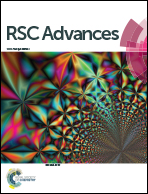Enhanced electrochemical performance of Li2NiTiO4 with micro-structural rearrangement via urea treatment
Abstract
Nanosized Li2NiTiO4 (LNT) with a disordered rock salt structure has been prepared by the sol–gel method. To improve the electrochemical performance, LNT has been mixed with urea and sintered in N2 atmosphere. The effects of different sintering temperatures in N2 on the micro-structural and electrochemical performances have been investigated by X-ray diffraction (XRD), X-ray photoelectron spectroscopy (XPS), N2 adsorption–desorption isotherm, transmission electron microscopy (TEM) and charge–discharge test. The electrochemical results show that Li2NiTiO4 with urea treatment at 500 °C (U-LNT-500) has the best rate capability, the highest discharge capacity and the best cycle ability, indicating that the electrochemical performances of LNT could be remarkably improved by this treatment. It is interesting to note that the discharge capacity of U-LNT-500 at ambient temperature is almost as high as the discharge capacity of LNT at 50 °C. It is believed that the micro-structural changes, such as the increase of the specific surface area and the volume of pores as well as the local ordered structure in terms of atomic arrangement after urea treatment should account for the enhancement of LNT electrochemical performances.


 Please wait while we load your content...
Please wait while we load your content...